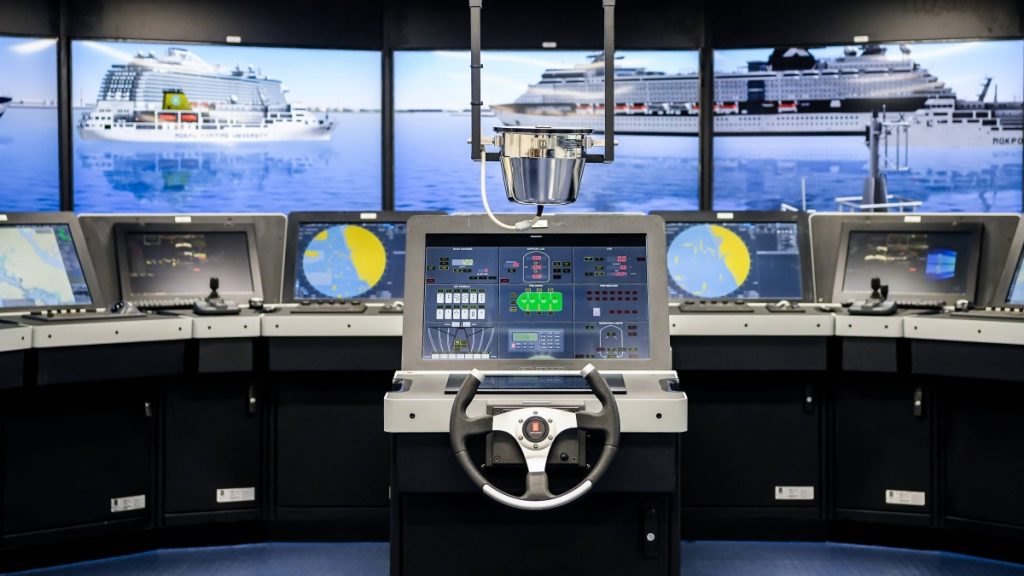In the vast and often unpredictable world of maritime operations, the importance of well-trained crews cannot be overstated. Shipping companies, aware of the risks posed by human error, have turned to advanced gaming technology to revolutionize how they train their personnel.
Maritime simulators, once basic tools, have evolved into sophisticated platforms that mirror real-world scenarios with stunning accuracy. These virtual environments are proving to be invaluable in enhancing safety, operational efficiency and the overall competence of seafarers.
The Evolution of Maritime Simulators
Like everything in the gaming and simulator world, from Microsoft’s Flight Simulator 1.00 to the games offered at sites like Bella Vegas, maritime simulators have come a long way since they were first invented. Early simulators were basic, often relying on simplified graphics and limited interactivity. However, with advancements in gaming technology, today’s maritime simulators are highly immersive, offering realistic representations of ships, ports and the vast ocean.
These modern simulators use cutting-edge software and hardware, including high-definition displays, motion platforms and advanced physics engines, to create an experience that closely mimics real-life conditions.
One of the key advancements in maritime simulation is the integration of virtual reality (VR) and augmented reality (AR). VR enables trainees to fully immerse themselves in a virtual environment, experiencing scenarios from the perspective of being on the bridge of a ship, while AR overlays digital information onto the real world, enhancing situational awareness.
Enhancing Safety Through Realistic Training
Safety is paramount in the maritime industry, where even a small mistake can have catastrophic consequences. Traditional training methods, such as classroom instruction and on-the-job training, have their limitations, particularly when it comes to preparing crews for rare or extreme situations. This is where maritime simulators shine.
Simulators allow trainees to experience and respond to a wide range of scenarios, from navigating through treacherous weather conditions to handling equipment failures and emergency situations. These scenarios can be tailored to mimic specific challenges that a crew might face, such as navigating through narrow straits, docking in crowded ports, or responding to a fire onboard.
Also, maritime simulators can replicate the consequences of errors without any real-world risk. Trainees can learn from their mistakes in a safe environment, receiving immediate feedback on their decisions. This iterative learning process helps to build competence and reduces the likelihood of errors occurring when they are out at sea.
Improving Operational Efficiency
Beyond safety, maritime simulators are also playing a crucial role in improving the operational efficiency of shipping companies. In an industry where time is money, the ability to optimise operations can lead to significant cost savings. Simulators provide a platform for crews to practice and refine their skills in areas such as fuel-efficient navigation, cargo handling, and route planning.
For example, simulators can be used to train crews on how to navigate the most fuel-efficient routes, taking into account factors such as weather, currents, and traffic. By practicing these skills in a virtual environment, crews can learn how to minimise fuel consumption and reduce the environmental impact of their operations. Similarly, simulators can be used to optimise cargo handling procedures, ensuring that goods are loaded and unloaded as efficiently as possible.
Operational efficiency also extends to crew coordination and communication. Simulators can recreate complex operations that require precise teamwork, such as manoeuvring large vessels in confined spaces or conducting search and rescue missions. By training in a simulated environment, crews can develop the communication and coordination skills needed to execute these operations smoothly and efficiently.
Real-World Applications and Success Stories
The adoption of maritime simulators has already yielded impressive results across the industry. Shipping companies, naval forces, and maritime academies around the world have embraced this technology as a core component of their training programs.
One notable example is the use of simulators by Maersk, one of the largest shipping companies in the world. Maersk has invested heavily in state-of-the-art simulators at its training centres, where seafarers undergo rigorous training before being deployed on vessels.
These simulators replicate the specific vessels used by Maersk, allowing trainees to familiarise themselves with the exact controls and systems they will encounter at sea. The result is a highly skilled workforce that is well-prepared to handle the challenges of modern shipping.
Another success story comes from the U.S. Navy, which has incorporated advanced simulators into its training regimen. The Navy uses simulators to train sailors in a variety of scenarios, including navigation, combat operations, and damage control. These simulators are so realistic that they have been credited with improving the Navy’s readiness and reducing the number of accidents during real-world operations.
Maritime academies are also benefiting from the integration of simulators into their curricula. Institutions like the California State University Maritime Academy and the World Maritime University use simulators to provide students with hands-on experience before they ever set foot on a ship. This approach ensures that graduates enter the workforce with a strong foundation of practical skills and knowledge.
The Future of Maritime Training
As technology continues to advance, the capabilities of maritime simulators are expected to grow even further. Future developments may include the integration of artificial intelligence (AI) to create adaptive training scenarios that respond to the actions of trainees in real-time. AI could also be used to analyse trainee performance and provide personalized feedback, helping to identify areas for improvement.
Additionally, the increasing availability of cloud-based simulation platforms could make this technology more accessible to a wider range of users. Small shipping companies and maritime training centres, which may not have the resources to invest in expensive simulator hardware, could benefit from cloud-based solutions that allow trainees to access simulations from anywhere with an internet connection.
The use of simulators may also expand beyond traditional training applications. For example, simulators could be used for crew certification and assessment, providing a standardized and objective way to evaluate the skills of seafarers. They could also play a role in ongoing professional development, allowing experienced crew members to keep their skills sharp and stay up-to-date with the latest industry practices.
Clearly, maritime simulators, powered by advanced gaming technology, are transforming the way ship crews are trained, enhancing safety and improving operational efficiency in the shipping industry.

